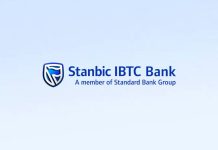The dollar was weaker on Tuesday ahead of a Federal Reserve meeting that is widely expected to end with an interest rate hike, as investors already have priced in two more rate increases this year and some in 2019, leaving little room for further currency gains.
The Fed kicks off its two-day meeting later in the session, with market participants focused on the U.S. central bank’s view on the economy as well as its guidance on future tightening. The Fed already has raised rates twice in 2018.
The dollar has benefited from a hawkish rate outlook all year, but has lost steam the last few weeks, as other economies such as the euro zone improved, keeping them closer to a shift to tighter monetary policy.
Since mid-August, the dollar has declined 3.1 percent against a basket of currencies.
“The U.S. dollar appears vulnerable heading into Wednesday’s Fed, given extended speculative bullish positioning against most of the G10 currencies and considerable tightening already reflected in fed funds futures,” said Eric Theoret, currency strategist at Scotiabank in Toronto.
He added that a December hike was priced around 80 percent, with roughly 50 basis points of tightening reflected for 2019.
In mid-morning trading, the dollar index was down 0.1 percent .DXY, at 94.051.
The euro, on the other hand, rose despite a European Central Bank (ECB) official downplaying on Tuesday its president Mario Draghi’s comments a day earlier about “relatively vigorous” inflation.
Some analysts said the euro was also supported by signs Italy’s anti-establishment coalition is likely to reach a compromise over its 2019 budget.
The euro was last up 0.4 percent at $1.1789 EUR=. It had touched a 3-1/2 month high on Monday after Draghi expressed confidence in euro zone inflation and wage growth, before giving up most of those gains.
But the ECB’s chief economist Peter Praet said on Tuesday there was nothing new in Draghi’s comments. The single currency managed to find strength.
Most analysts have interpreted Draghi’s speech as hawkish – euro zone money markets brought forward their expectations for a 10 basis point ECB rate hike to September from October 2019 – helping to underpin the single currency.
Against the yen, however, the dollar was up slightly at 112.86 yen JPY= after minutes from the Japanese central bank’s July policy meeting showed that a few board members said the Bank of Japan must consider more seriously the potential dangers of ultra-easy policy.
Overall, the broader currency market was largely quiet on Tuesday as the latest round of tariffs in the U.S.-China trade conflict kept investors on edge.
“There is a general lack of impulses. The market is not reacting (to the trade war) because we are not seeing any economic impact. The other big driver (of currencies) is usually monetary policy but the FOMC is going to be a non-event,” Thu Lan Nguyen, a strategist at Commerzbank in Frankfurt said, referring to the Federal Open Market Committee.














